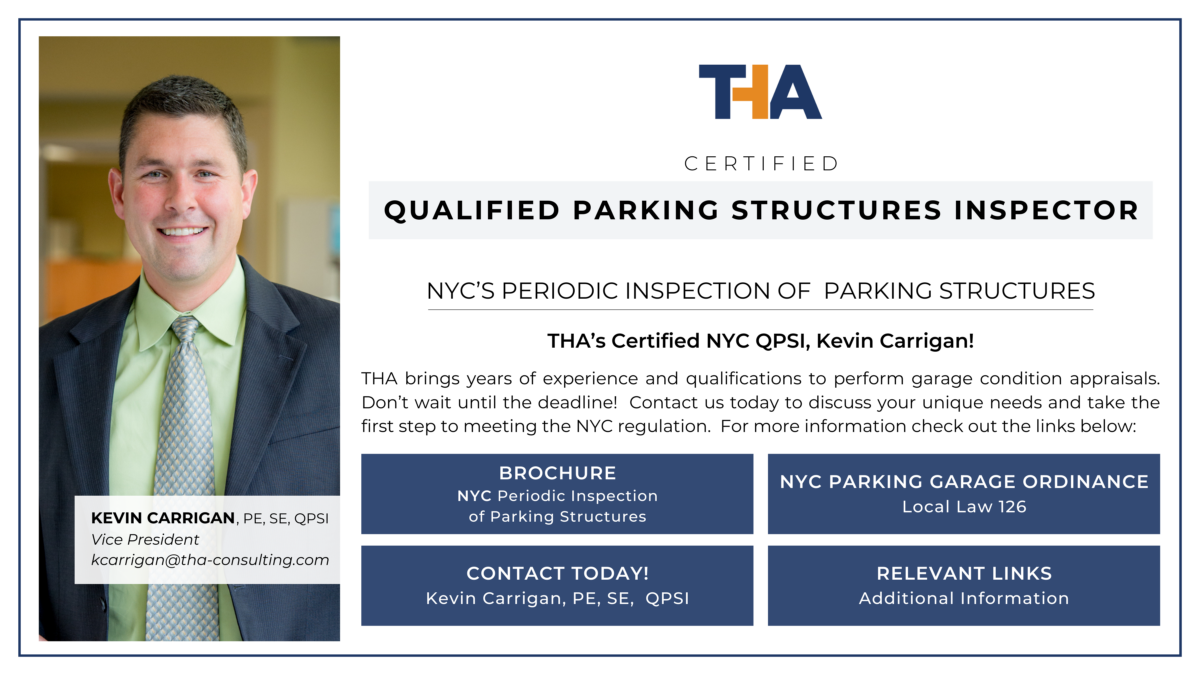What are the impacts of lighting in parking facilities and what are best practices?
Over the past thirty years, parking garages were almost exclusively lit by either high pressure sodium (HPS), metal halide (MH) or fluorescent lights. The most recent technology to enter garages is LED lighting. When LEDs first came onto the scene, they were known to cause glare and reduced light distribution due to being specified incorrectly. However, since the technology and specifications for LED lights have improved, fixtures have become more efficient with increased output, safer, and easier to maintain. Properly designed LED layouts can offer energy and maintenance savings, as well as a whiter light with no glare and proper light distribution. At TimHaahs, we see LEDs becoming the standard for efficient, safe lighting within parking garages.
Safety and security are two of the most important aspects of a quality parking garage. Lighting can improve safety and security within a garage in several ways. First, by including quality uplighting in a garage, the “cave effect” of dark ceilings is eliminated. This makes the space feel larger, more well-lit, and safer.
Second, the range of lighting should be mostly uniform. Standards limit the ratio of maximum to minimum lighting variance to 10:1. This means that the most well-lit area within a garage can be no more than 10 times the light level of the least well-lit area within the same garage. The more even the lighting levels within the garage, the easier it is for the human eye to adjust to that light level and see correctly. This lends to not just a reality of safety, but an overall sense of safety as well. Additionally, cameras used for security can perform better in well-lit spaces, able to focus sharper, and recognize colors better.
Next, while standards require a minimum of 5 footcandles of light within the garage, 10 footcandles are recommended. Using a higher footcandle level will ensure that the entire garage is lit well enough for all users. Using 10 footcandles will also help reduce the maximum/minimum lighting variance ratio.
Due to some unique features of parking garages (including reduced floor to floor heights and exposed structural members) as well as the nature of LED lights, some challenges may arise when using LEDs in a parking garage. For instance, LEDs are directional lights, and if installed without proper shielding they may cause glare. In order to avoid this problem, it is recommended that all LED lights be installed with double refraction or reflection shields. This will greatly reduce the glare of the LED, which can be blinding without shielding.
LEDs can very efficiently illuminate a parking garage. New LED lights offer a greater effective output than other light sources. At a minimum, it is recommended that LED fixtures have an effective output of 100 lumens per watt. This will reduce the power consumption of the light fixtures throughout the garage. Another way to reduce power consumption is to install occupancy or photocell sensors. By installing fixture mounted sensors, the fixtures can be programmed to only activate when required.
Another incentive to using LED fixtures within a parking garage is that utility companies may offer incentives if the fixtures are Design Light Consortium (DLC) certified. By using DLC certified light fixtures in a garage, the local utility companies allow for the installed cost per light fixture to be reduced significantly.
ENERGY SAVINGS EXAMPLE:
- Assume a typical garage has 300 light fixtures. Common installations within the industry are 150-watt HPS or 175-watt MH light fixtures. Let’s look into the usage of the 175-watt MH light.
- Including ballast, a 175-watt MH light uses approximately 208 watts
- 300 light fixtures in a garage x 208 watts per fixture = 62,400 watts = 62.4 kW
- A new LED fixture can replace the existing 175-watt MH fixture at comparable lumen output and draw only 45 watts
- 300 fixtures x 45 watts = 13,500 watts = 13.5 kW
- Total savings in kW usage: 62.4 kW – 13.5 kW = 48.9 kW
- To find the savings in annual energy costs:
- Assume that all lights are on all the time (24/7/365) = 8,760 hours per year
- Assume a national average utility cost to be $0.11/kWh
- 48.9 kW x 8,760 hours per year x $0.11/kWh = $47,120 energy cost savings
- Assume that maintenance savings for a new LED fixture compared to an existing MH fixture will be approximately ¼ the energy savings of the new LED fixture.
- $47,120 x 25% = $11,780 per year in maintenance savings
TOTAL SAVINGS PER YEAR: $47,120 + $11,780 = $58,900
Recouping the cost of new LED light fixtures:
- Assume the installed replacement cost of a new low or no glare LED fixture is $475 per fixture.
- Assume the national average of a utility rebate for using new LED fixtures is $100 per fixture. This reduces the installed cost to $375 per fixture.
- The total installed cost for 300 fixtures is $375 x 300 fixtures = $112,500
- The time it will take for the energy savings to pay for the installation of the new LED Lights:
- $112,500/$58,900 per year = 1.91 years
Lastly, the design of lighting fixtures have become better from an aesthetic standpoint as well. Where these fixtures were once firmly in the realm of industrial lighting, the modern designs have a more commercial office style, lending to an overall heightened experience.
WORKS CITED
Woodroof, Eric, and Jeff Pinyot. “LEDs for Parking Garage Lighting.” Buildings Dec. 2015: 10-11. Print.
*Federal, State, and Local codes govern most of these requirements and should be thoroughly investigated. Data presented herein should be considered guidelines only. For more specific information and assistance with implementation of these guidelines, please contact THA Consulting, Inc. via email at info@tha-consulting.com



